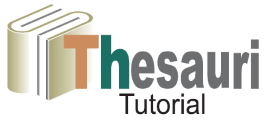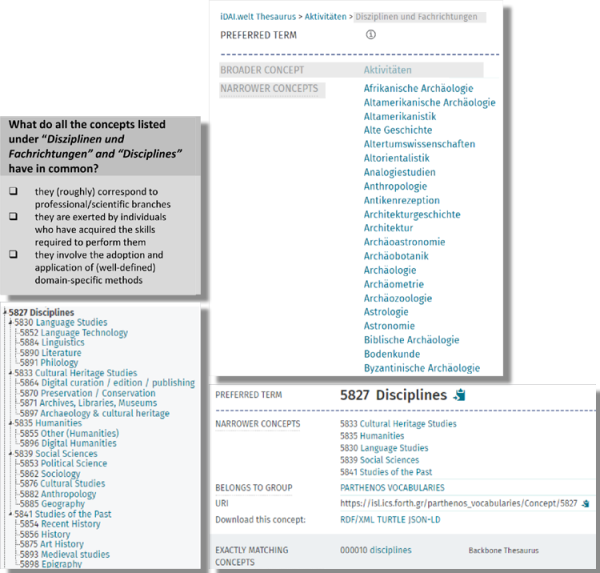The model of the BBT was developed in accordance with the following principles:
- adopting a semantic approach,
- using a bottom-up analysis of existing classificatory systems to inform the decision to create top-level terms
- allowing for expansions
The semantic approach refers to the framework of semantics, which lies at the heart of the faceted classification. The resulting facets are based on the intensional properties of the concepts they subsume –i.e. the essential characteristic expressing the substance of a concept; in other words, the necessary and sufficient conditions for belonging to the category denoted by the facet.
The process of generating the top-level terms of the BBT involved a bottom-up adduction of higher level meanings through the analysis of a abroad body of classificatory systems used by Humanities researchers –see Figure, below.
The derived top-level concepts come to serve as hooks upon which sufficiently described thesauri can be mapped, in order to create a semantically consistent hierarchy. This bottom up approach, however, is left in principle open, which means that any branch of the BBT can be subject to revision. Therefore, the overall classification evolves over time, following the integration of thesauri covering new scientific areas, resulting in enriched and expanded hierarchies.
What the BBT proposes essentially, is the conceptual model for a federation of thesauri that are brought together through an open-ended backbone.






